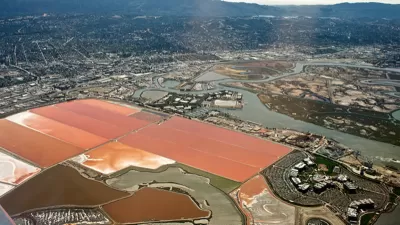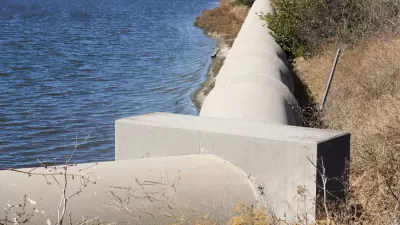The San Francisco Bay Area serves as a case study, that applies in places like Louisiana as well, of how mud shortages compound the threats of sea level rise.

John Upton reports on the surprising panacea in the effort to adapt to rising sea levels in the marshlands of the San Francisco Bay Area. John Upton explains the problem:
Marshes capture mud from water to grow and sustain themselves. A worsening shortage of mud floating in San Francisco Bay and its waterways is contributing to erosion. It’s threatening plans to block flooding from sea level rise through the restoration of wetlands in the Bay Area, where homes and office buildings are packed into low-lying areas.
Meanwhile, scientists are quickly realizing the pressing need for these projects to be successfully implemented.
The article goes into great detail in describing the critical role of mud to habitat in the San Francisco Bay Area, though the problem is also rampant along the Louisiana coastline.
According to Upton, 42,000 acres of wetlands have been restored in the Bay Area since 1999, when Bay Area agencies released a plan to restore 100,000 acres of wetlands. More help could be on the way:
Voters in the nine Bay Area counties in June will consider imposing a new annual property tax [pdf] of $12 per parcel to reduce water pollution and help fund an acceleration of marsh restorations. Some of the funds could be spent addressing the sediment shortfall. The tax would raise about $25 million a year — “a fraction of what is needed,” a Contra Costa Times editorial noted last week.
FULL STORY: Mud Shortage Eroding California’s Climate Defenses

Alabama: Trump Terminates Settlements for Black Communities Harmed By Raw Sewage
Trump deemed the landmark civil rights agreement “illegal DEI and environmental justice policy.”

Planetizen Federal Action Tracker
A weekly monitor of how Trump’s orders and actions are impacting planners and planning in America.

How Atlanta Built 7,000 Housing Units in 3 Years
The city’s comprehensive, neighborhood-focused housing strategy focuses on identifying properties and land that can be repurposed for housing and encouraging development in underserved neighborhoods.

In Both Crashes and Crime, Public Transportation is Far Safer than Driving
Contrary to popular assumptions, public transportation has far lower crash and crime rates than automobile travel. For safer communities, improve and encourage transit travel.

Report: Zoning Reforms Should Complement Nashville’s Ambitious Transit Plan
Without reform, restrictive zoning codes will limit the impact of the city’s planned transit expansion and could exclude some of the residents who depend on transit the most.

Judge Orders Release of Frozen IRA, IIJA Funding
The decision is a victory for environmental groups who charged that freezing funds for critical infrastructure and disaster response programs caused “real and irreparable harm” to communities.
Urban Design for Planners 1: Software Tools
This six-course series explores essential urban design concepts using open source software and equips planners with the tools they need to participate fully in the urban design process.
Planning for Universal Design
Learn the tools for implementing Universal Design in planning regulations.
Jessamine County Fiscal Court
Caltrans
Institute for Housing and Urban Development Studies (IHS)
City of Grandview
Harvard GSD Executive Education
Toledo-Lucas County Plan Commissions
Salt Lake City
NYU Wagner Graduate School of Public Service




























